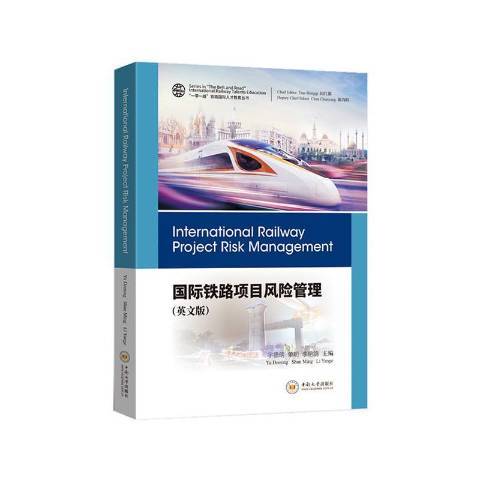內容簡介
本書介紹國際鐵路項目風險管理的基本概念、原理、方法和套用案例,由十三章組成,包括:導論,風險管理原則、框架和流程, 法律體系、契約和法律風險,項目風險形成機理, 風險識別技術, 敏感性分析、貝葉斯分析與決策樹分析,預先危險性分析、影響圖技術和Z-矩陣,事件樹分析與故障樹分析,蒙特卡洛模擬,系統動力學,項目風險預警,工程保險與工程擔保和變更、索賠和爭端。
主要特點:本書編寫堅持理論聯繫實際的原則,在重點闡述國際鐵路項目風險管理相關概念、原理、機理和方法的同時,儘可能介紹鐵路工程項目風險管理的相關案例,且每章配有相應的練習與思考題,以便讀者更好掌握國際鐵路項目風險管理的理論知識和實踐。
該書可以作為項目管理、工程管理、工程造價、土木工程規劃與管理、土木工程等專業工程項目風險管理本科生、研究生課程教材或教學參考書,對工程公司、工程諮詢公司的管理人員和工程師亦有重要參考價值。
圖書目錄
Contents
Chapter 1 Introduction 1
1.1 Drivers, concepts and characteristics of international projects 1
1.2 Concepts and key features of construction megaprojects 3
1.3 International project delivery systems 6
1.4 Global railway construction markets 14
1.5 Introduction of risk management 16
1.6 Channel Tunnel Rail Link risk transfer and innovation in project delivery 28
Exercises and Discussions 39
Chapter 2 Risk Management Principles, Frameworks and Processes 40
2.1 Introduction 40
2.2 Risk management principles 40
2.3 Risk management conceptual frameworks 44
2.4 Risk management process 48
Exercises and Discussions 57
Chapter 3 Legal Systems, Contracts, and Legal Risks 58
3.1 Introduction 58
3.2 Governing law system 58
3.3 Different types of legal systems 59
3.4 Differences between common law system and civil law system 60
3.5 International engineering and construction contracts 68
3.6 Legal risks in international railway projects 75
Exercises and Discussions 80
Chapter 4 Project Risk Formation Mechanisms 82
4.1 Construction accident formation mechanisms 82
4.2 PPP/BOT transportation project failure mechanisms 90
4.3 International railway project loss mechanisms 111
4.4 International railway project loss case 112
Exercises and Discussions 115
Chapter 5 Risk Identification Techniques 116
5.1 Introduction 116
5.2 Assumptions and constraints analysis 117
5.3 Scenario analysis 117
5.4 Flow diagram 119
5.5 SWOT Analysis 120
5.6 Cause and effect diagrams 125
5.7 Checklists 126
Exercises and Discussions 131
Chapter 6 Sensitivity Analysis, Bayesian Analysis and Decision Tree Analysis 132
6.1 Sensitivity analysis 132
6.2 Bayesian analysis 135
6.3 Decision tree analysis 138
Exercises and Discussions 142
Chapter 7 Preliminary Hazard Analysis, Influence diagrams technique and Z-Matrix 143
7.1 Preliminary hazard analysis 143
7.2 Influence diagrams 154
7.3 Z-Matrix 160
Exercises and Discussions 162
Chapter 8 Event Tree Analysis and Fault Tree Analysis 163
8.1 Introduction 163
8.2 Event tree analysis 164
8.3 Fault tree analysis 168
Exercises and Discussions 180
Chapter 9 Monte Carlo Simulation 181
9.1 Commonly used probability distributions in engineering 181
9.2 Basics of Monte Carlo simulation 187
9.3 Generation of random numbers 187
9.4 CDF-inverse method(continuous case)188
9.5 Acceptance-rejection method 189
9.6 Generation random variates from probability distributions 189
9.7 Variance-reduction techniques 191
9.8 Monte Carlo simulation case 192
Exercises and Discussions 202
Chapter 10System dynamics 203
10.1 Historical overview of the system dynamics approach203
10.2 Causal loop diagrams and stock and flow diagrams204
10.3 Procedures for using the system dynamics method206
10.4 Application case of system dynamics208
Exercises and Discussions 215
Chapter 11Project Risk Early Earning 216
11.1 Introduction 216
11.2 Earned-value-management-based project schedule and cost early warning 218
11.3 Earned-schedule-based project schedule early warning 220
11.4 Dynamic-control threshold-based project schedule early warning 222
Exercises and Discussions 226
Chapter 12 Construction Insurance and Surety Bonds 227
12.1 Introduction 227
12.2 Insurance for international railway engineering projects 227
12.3 Surety bonds for international railway engineering projects 237
Exercises and Discussions 248
Chapter 13 Variations, Claims and Disputes 249
13.1 Introduction 249
13.2 Variations in construction 249
13.3 Claims in construction 254
13.4 Disputes in construction 258
Exercises and Discussions 266
References 267

